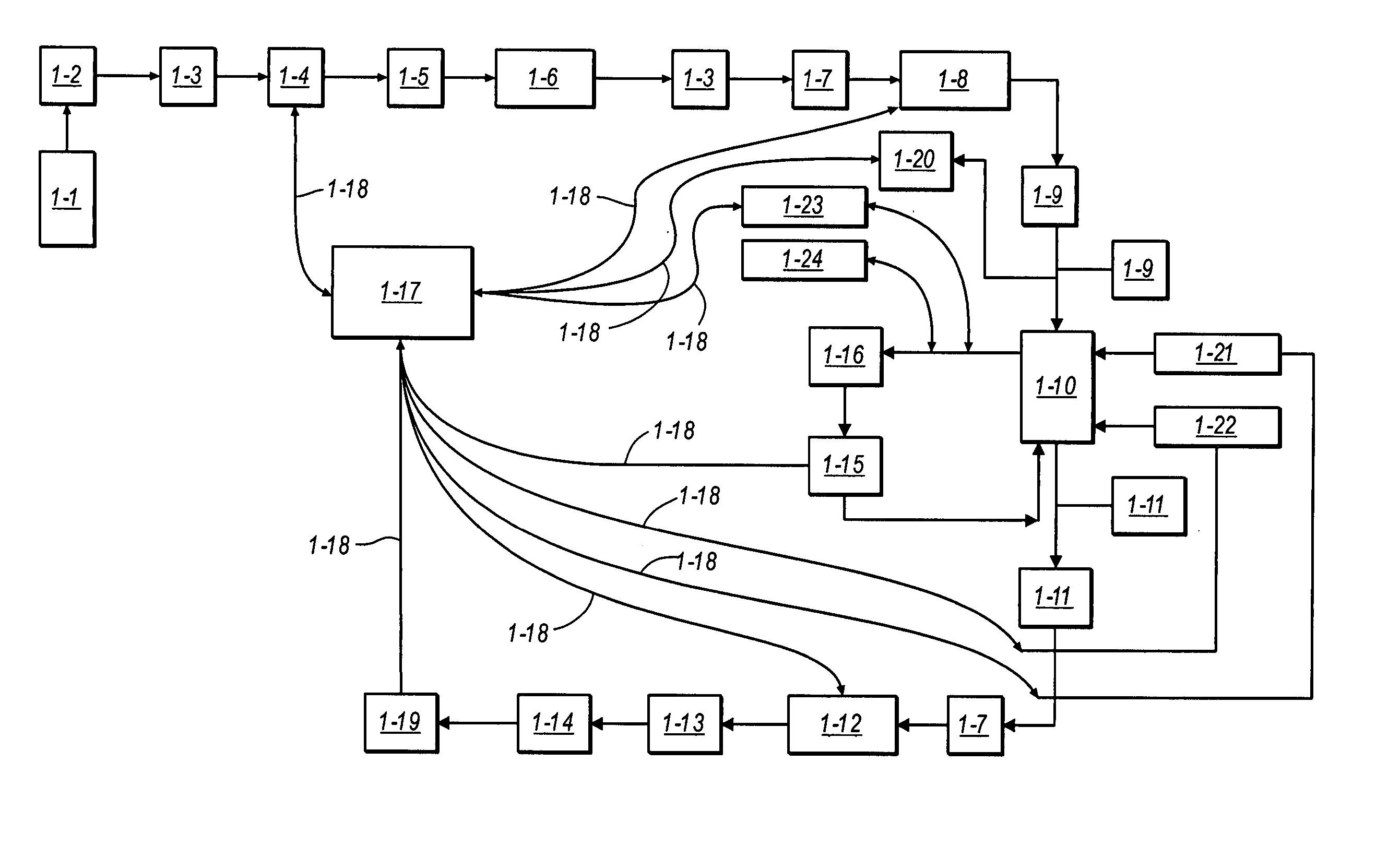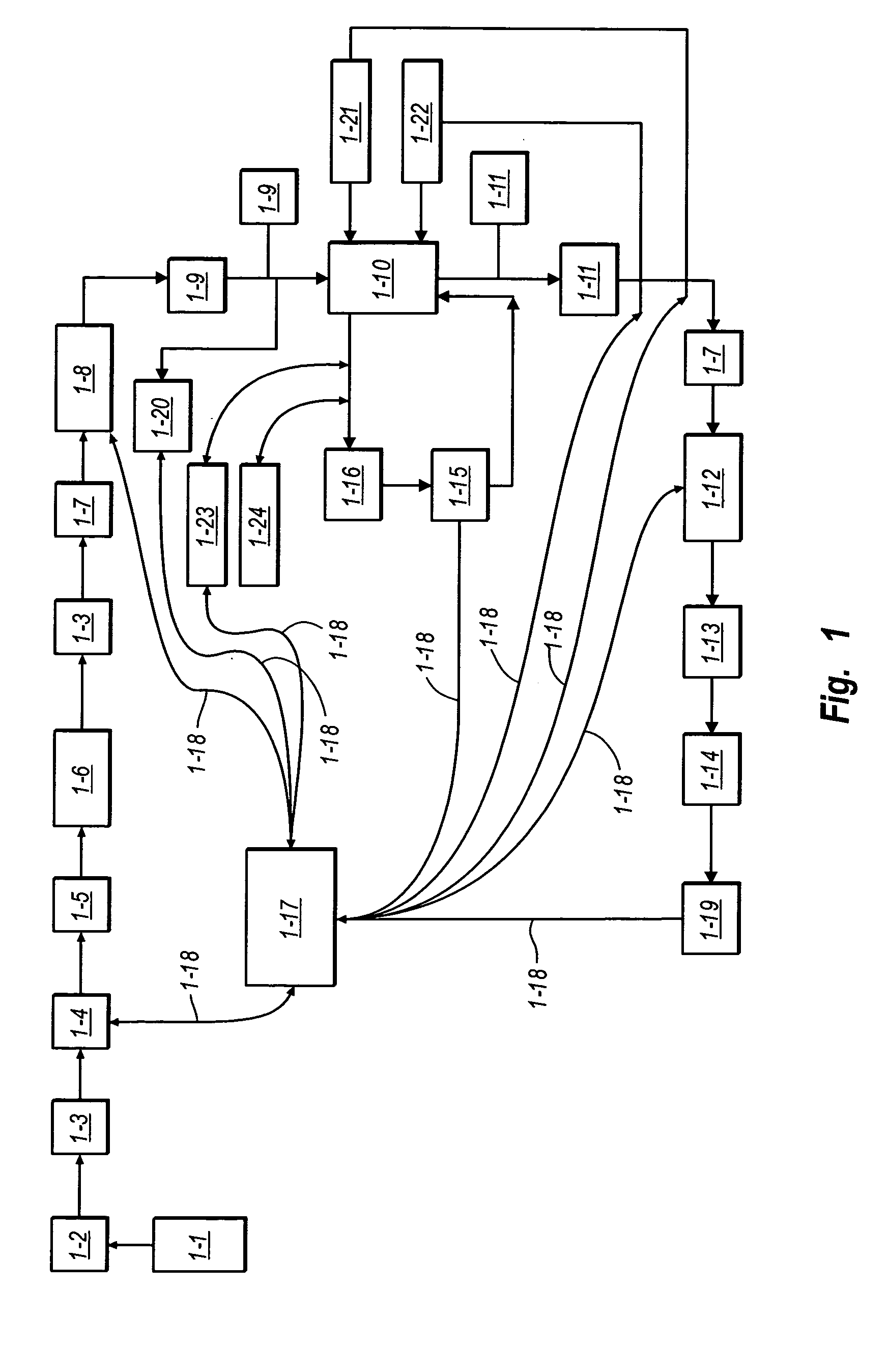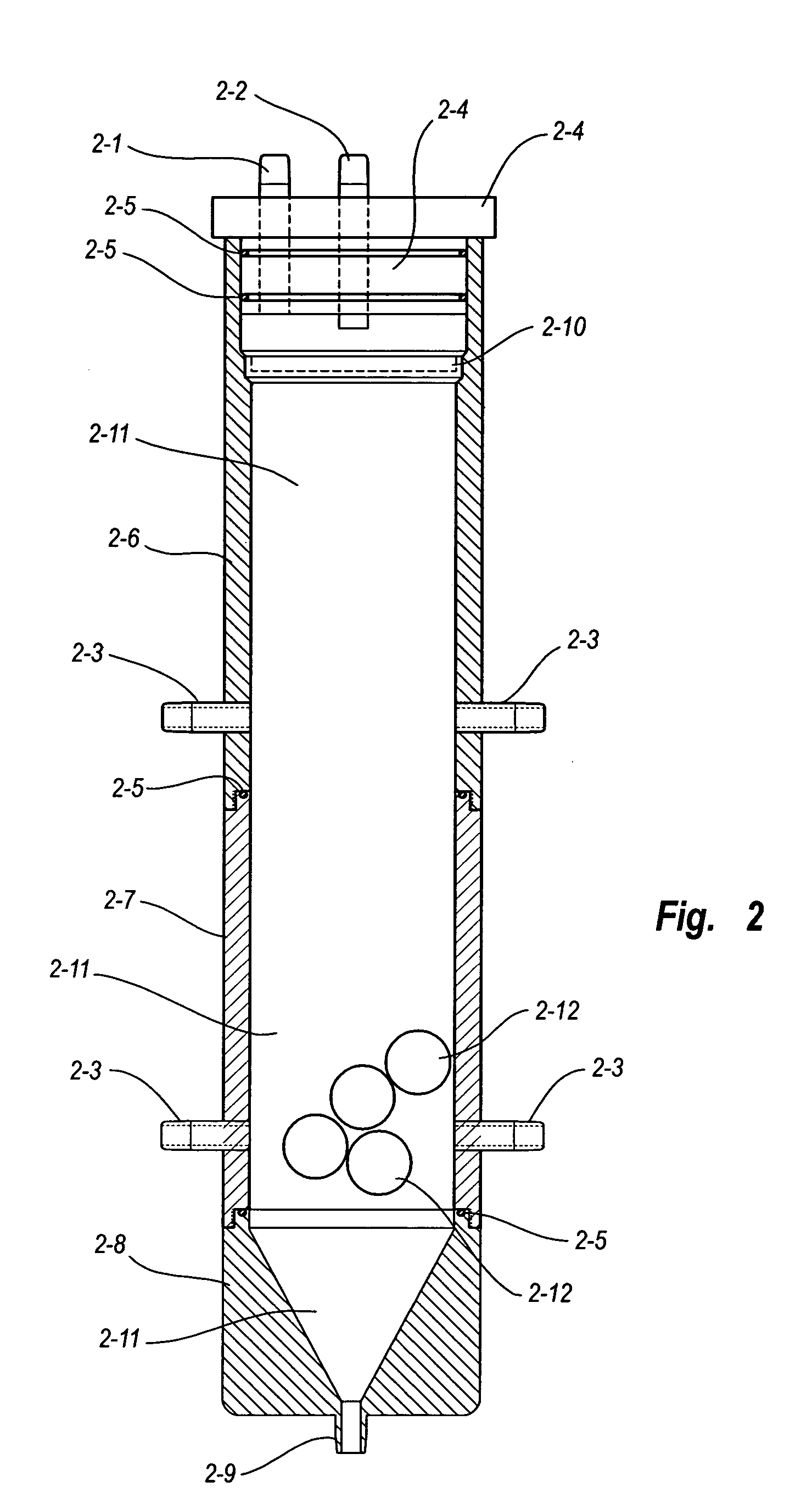Viral inactivation using ozone
a technology of inactivation and ozone, which is applied in the direction of disinfection, water/sewage treatment by oxidation, water treatment parameter control, etc., can solve the problems of inability to measure, report or differentiate the amount of ozone delivered from the amount that was actually absorbed and utilized, and the regulatory approval as a therapeutic option is unlikely, so as to improve the gas-fluid contacting device and maximize the effect of gas-fluid mass transfer
- Summary
- Abstract
- Description
- Claims
- Application Information
AI Technical Summary
Benefits of technology
Problems solved by technology
Method used
Image
Examples
example 3
c. EXAMPLE 3
Another example of data measured and calculated by the system described herein is in Table 4 below. Newborn Calf Serum commercially obtained was utilized as the target fluid. The variable pitch device (FIG. 3) with variable pitch platform (FIG. 4) was employed as the gas-fluid contacting device. The following initial conditions were utilized; 900 ppmv ozone inlet concentration, 145 ml initial fluid volume, 1000 ml per minute gaseous flow rate, 189 ml per minute fluid flow rate counter current to the ozone / oxygen admixture flow. Incremental reductions in fluid volume are due to sampling of fluid through the fluid access port (24).
TABLE 4NEWBORN CALF SERUMMEASURED VARIABLESAverage Inlet OzoneAverage Exit OzoneElapsed-timeFluid VolumeGas Flow RateFluid Flow RateConcentrationConcentration(5 minute intervals)(milliliters)(liters / minute)(liters / minute)(ppmv)(ppmv)51451.0000.189908.168.051431.0000.189911.450.151411.0000.189904.446.651391.0000.189904.750.9CALCULATED VARIABLES...
example 1
1. EXAMPLE 1
In one example, fetal calf serum is added to another viral-free biological fluid, specifically mammalian serum derivatives, as they are a common constituent in culture media and other biological fluids used in the culture of cell-lines, viruses, bacteria and other microorganisms. A common occurrence during the culture of these microorganisms is the simultaneous culture of a viral contaminant in the culture system that renders the culture system useless. It is commonly recognized that the source of this contamination is derived from the addition of the biological fluid component into the culture system. Treatment allows the inactivation of a virus within the biological fluid constituent while maintaining the biological integrity of said biological fluid constituent. The resultant addition of the viral-inactivated biological constituent will therefore not cause viral contamination in the culture system. This example is also applicable to the addition of a biological fluid...
example 2
2. EXAMPLE 2
Examples of the inactivation of model viruses are included in Table 6 below. These viruses represent a number of families, differ in the genomic composition, lipid-enveloped and non-enveloped virions, and vary in their respective symmetries. Virally contaminated fluids (a number of different concentrations of bovine serum products spiked with the indicated virus) varied in serum or protein concentration as indicated and were constituted in phosphate buffered saline. Inactivation was determined by either plaque forming or focal forming unit assays in target cell lines, as appropriate. Elapsed-time indicates the period of time required to affect the indicated level of inactivation.
Parallel cytotoxicity, cell viability and cell proliferation studies were performed (data not shown) without any virus in these various serum preparations. In each instance, the serum product subjected to the method under identical conditions for viral inactivation yielded a product that maint...
PUM
| Property | Measurement | Unit |
|---|---|---|
| weight | aaaaa | aaaaa |
| pressure | aaaaa | aaaaa |
| temperature | aaaaa | aaaaa |
Abstract
Description
Claims
Application Information
 Login to View More
Login to View More - R&D
- Intellectual Property
- Life Sciences
- Materials
- Tech Scout
- Unparalleled Data Quality
- Higher Quality Content
- 60% Fewer Hallucinations
Browse by: Latest US Patents, China's latest patents, Technical Efficacy Thesaurus, Application Domain, Technology Topic, Popular Technical Reports.
© 2025 PatSnap. All rights reserved.Legal|Privacy policy|Modern Slavery Act Transparency Statement|Sitemap|About US| Contact US: help@patsnap.com



